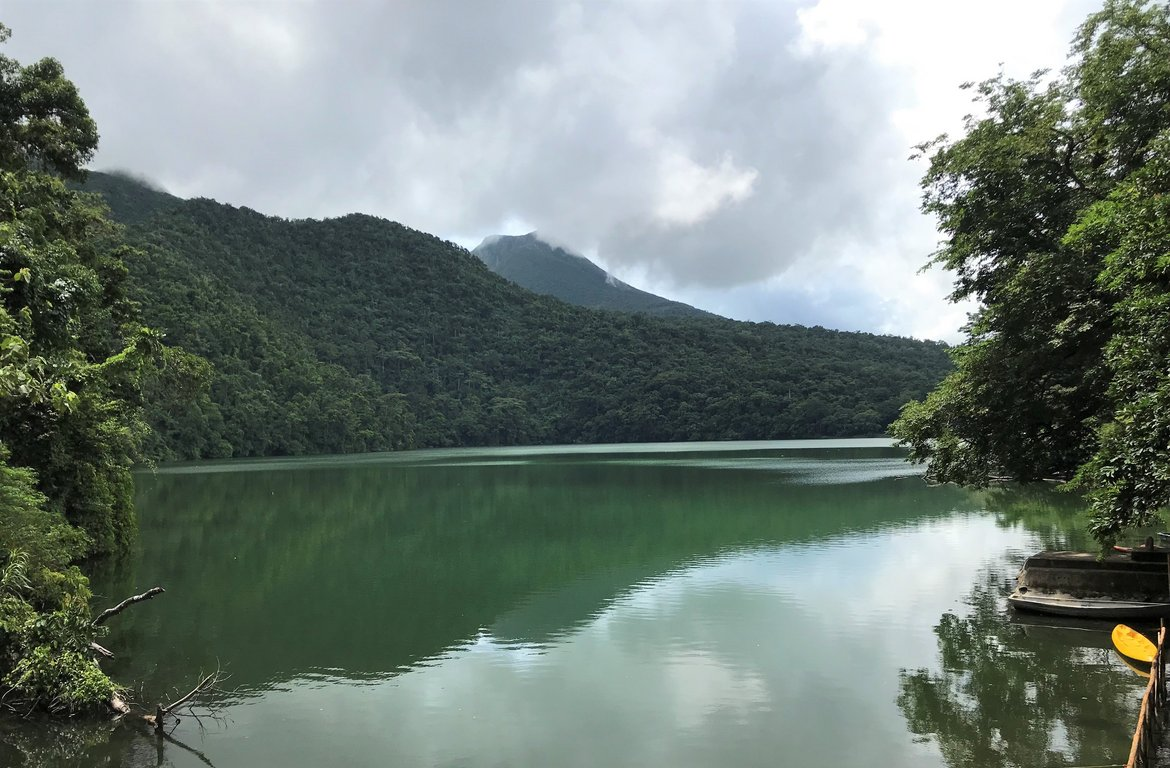From 1630 to 1900, the western Pacific experienced El Niño-like conditions, demonstrating that the phenomenon about to play havoc with global weather is not always brief. The finding is also a reminder of how Eurocentric views of historical climate patterns can lead us badly astray.
El Niños affect weather worldwide, but their core feature is a weakening or reversal of the usual pattern of warmer waters in the western Pacific than the east. El Niños as we know them usually last 9-12 months, but similar trends can occur – albeit more weakly – over much longer periods.
Sediment cores from Lake Bulusan in the Philippines, reported in a new paper, reveal a prolonged El Niño-like state from 1630 to 1900, the second half of the period often known as the Little Ice Age.
The Little Ice Age (LIA) gets its name from the fact that temperatures were indeed cold in Europe, famously exemplified by frost fairs on the frozen river Thames. Ice cores from Greenland indicate conditions were similarly cold on the other side of the North Atlantic.
The period is exhibit A in climate change deniers’ case that the current warming is a natural phenomenon. However, while rising temperatures today are definitely global, the same was probably not the case for the LIA. For most of the period, temperature records are lacking across most of the world, and proxies such as tree rings and lake sediments are also skewed towards a few regions.
Dr Ana Prohaska of the University of Copenhagen led a team seeking to address that by collecting 1,400 years of sediments from Lake Bulusan in the Philippines. Leaves washed into the lake preserve stable hydrogen isotopes in their wax, which provides an indication of rainfall during their growth period, particularly in autumn.

The muddy sediment core doesn’t look as impressive as ice cores, and lacks annual resolution, but it still tells us a lot on decadal scales
Image Credit: Department of Environment and Natural Resources, Philippines & Aggrupation of Advocates for Environmental Protection Bulusan, Inc
From 1600 to 1650, autumn rains dropped dramatically and stayed low all the way through to 1900. The team attributes this to a sustained shift in differences is sea surface temperatures between the east and west Pacific, known to climatologists as “zonal gradients”.
The shift does not mean that the Pacific was locked in a permanent El Niño for two and a half centuries. Instead, baseline conditions were shifted in that direction, relative to today, with fluctuations on yearly and decadal scales, just as even a hot summer can have a few cold days.
“Our study provides compelling evidence for the intricate relationship between zonal gradients in sea surface temperature and hydrological patterns in the tropical Pacific,” Prohaska said in a statement.

Lake Bulusan lies in Volcano National Park, Luzon
How far the impact of this zonal gradient shift spread remains to be seen. However, we know that as the largest ocean in the world, what happens in the Pacific usually ripples across the planet, and El Niños can have devastating consequences thousands of miles away.
The authors don’t know how likely such a sustained move to El Niño-like conditions is to happen again. At one time it was thought anthropogenic global warming would make El Niños more frequent and intense, but recent decades have made the more frequent part at least look doubtful.
At a minimum, however, work like this could help us understand how the western Pacific is likely to respond to changing climate conditions. It will also boost the slow process of shifting the focus on the last millennium’s climate away from regions bordering the North Atlantic, as if they were the whole world.
The study is published open access in the journal Communications Earth & Environment
Source Link: For 270 Years, The Pacific Was In A Slow El Niño